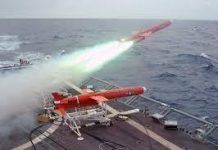
Germany-based company Helsing has introduced an AI-driven underwater drone surveillance system designed to monitor enemy submarines and vessels continuously for several months. Central to this system is Helsing’s artificial intelligence platform, Lura, which processes information gathered by SG-1 Fathom drones, the company stated.
Utilizing an extensive acoustic model, Lura can accurately identify and classify various underwater threats by analyzing the unique acoustic signatures emitted by submarines and different classes of ships, according to Helsing.
The company claims that Lura’s technology can detect sounds that are ten times fainter than what other AI systems can pick up. Additionally, it can distinguish between specific vessels even within the same category and operates up to 40 times faster than human analysts.
Many modern militaries gather intelligence on opposing naval forces by monitoring acoustic noise from propulsion systems as well as wake patterns and bubbles created by ships, enabling analysts to cross-reference this data to identify maritime threats.
Helsing highlights that their Fathom drones can operate in swarms, deploying hundreds simultaneously to patrol underwater regions for up to three months. The system was recently demonstrated at Portsmouth Naval Base in England, with plans to roll out the technology later this year.
Possible deployment zones include the North Sea and Baltic Sea, where NATO is actively engaged in the Baltic Sentry operation aimed at protecting critical maritime infrastructure. NATO has also tested an AI tool called Mainsail, developed by the NATO Centre for Maritime Research and Experimentation in Italy, which flags suspicious vessels by analyzing vast maritime data to detect underwater threats or vessels deviating from expected routes.
Gundbert Scherf, co-founder and co-CEO of Helsing, said, “Integrating AI at the forefront of underwater monitoring will illuminate the oceans and act as a deterrent to adversaries, strengthening Europe’s security.”




